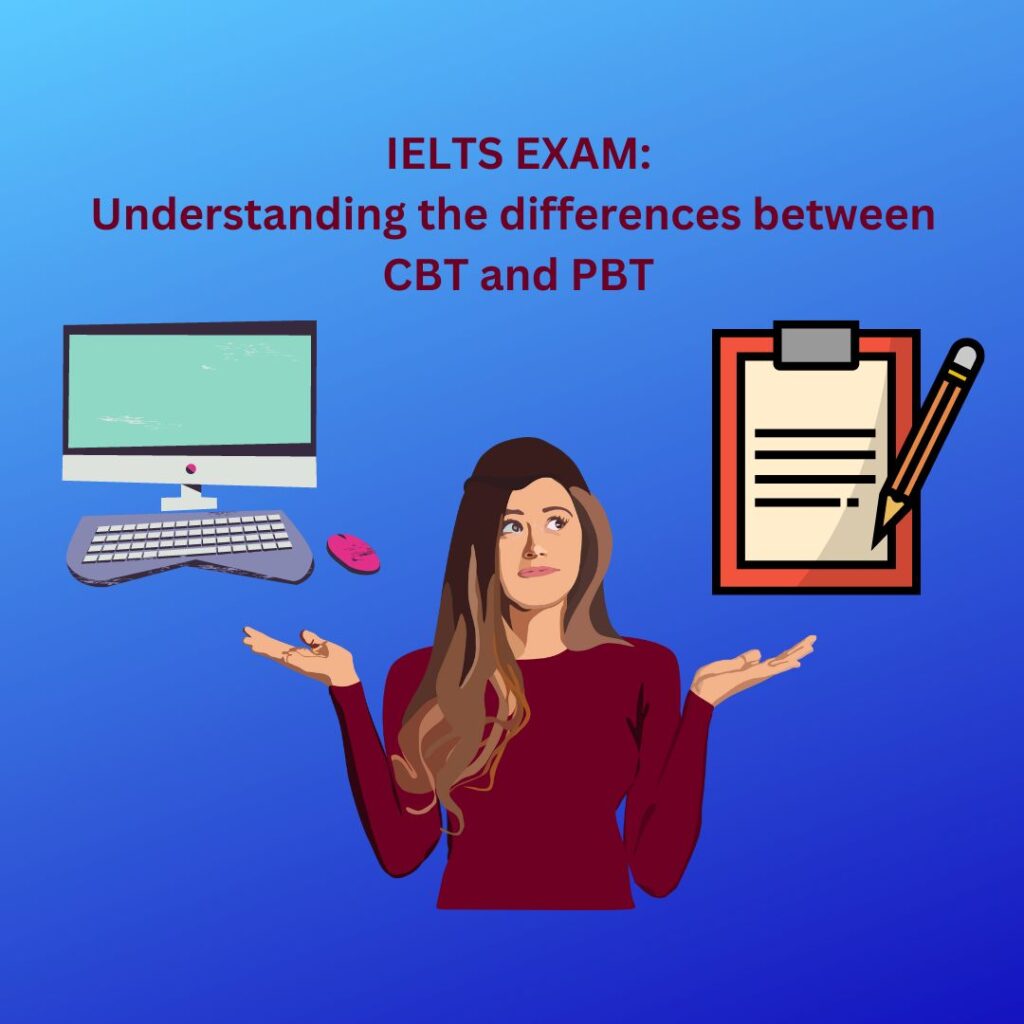
Understanding IELTS Test Formats
The International English Language Testing System is an English language proficiency test one has to take if one wants to study, work or immigrate to English-speaking countries. For a long time, IELTS was a paper-based test. However, recently, IELTS offered students a choice of taking the test in computer-based mode [CBT] or paper-based mode [PBT]. Choosing the suitable mode of examination is no mean feat here!
Comparing CBT and PBT
The test format is the same, you get the same sections, the same question types, the same difficulty level, and the same time per section with the same evaluation and marking scheme. The Speaking section is conducted face-to-face, and often on different dates. It is the SAME for both PBT and CBT. The main differences between CBT and PBT can be seen in the Listening, Reading, and Writing modules, which are discussed in detail below:
| Modules | Pen-Paper based | Computer-based |
| Listening |
|
|
| Reading |
|
|
| Writing |
|
|
| Speaking |
Same |
Same |
Click here to read more blogs about IELTS. You can also visit our sections on GRE and Admission Counseling.
Other differences between CBT and PBT
| Pen-Paper based | Computer-based |
|
4 slots in a month |
90 slots in a month |
|
Results in 12-13 days |
Results in 3-5 days |
|
Test centers are less crowded |
Test centers may be more crowded |
|
– |
Noise because of typing during the writing section can get distracting |
Factors to Consider When Choosing Between CBT and PBT
While choosing the most appropriate mode of the exam, we recommend that you keep in mind your application deadlines. In addition, find out your comfort level by checking the sample of the CD-IELTS on the IDP website to know the Page Look and feel of the CBT exam. Similarly, you can try out a paper-based test to eventually decide which mode to choose.
As India’s leading Study Abroad Consultant, Dilip Oak’s Academy offers a comprehensive suite of services, including GRE, TOEFL, and IELTS coaching, as well as GRE Self Prep. Furthermore, our admission counseling services can guide you through the entire process from Shortlisting Universities to Visa Counseling. With our expertise, we have successfully sent 32,000 students to various prestigious American universities like MIT, Stanford, Cornell, and Carnegie Mellon. To enroll in our comprehensive overseas education consultancy services, book a free consultation or call us at 91-20-67444222.
